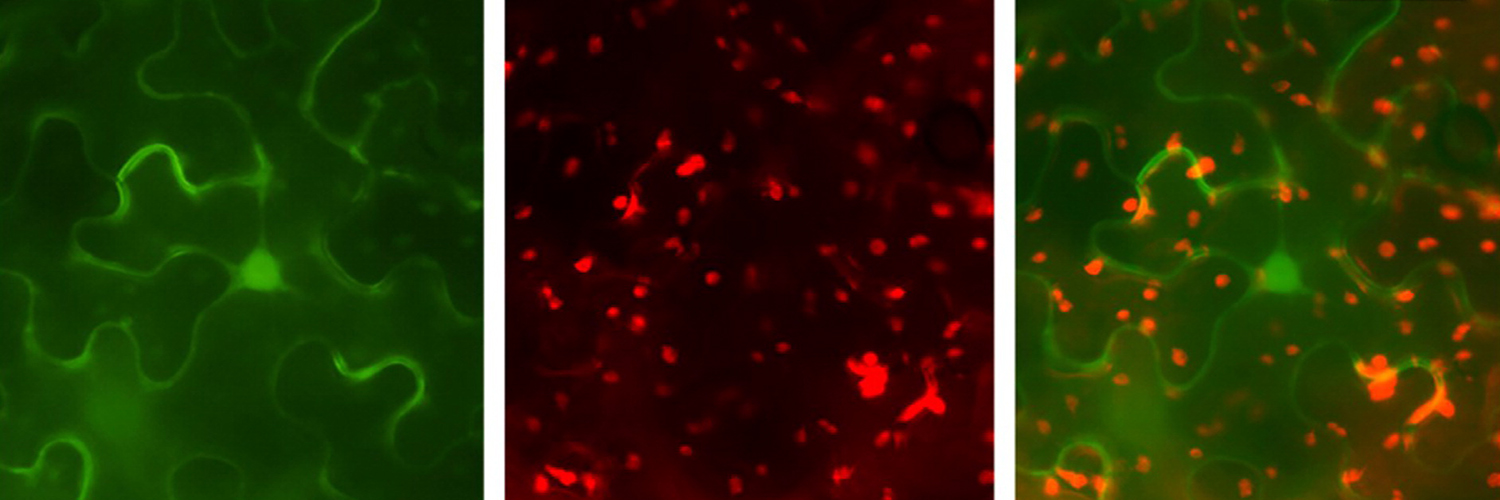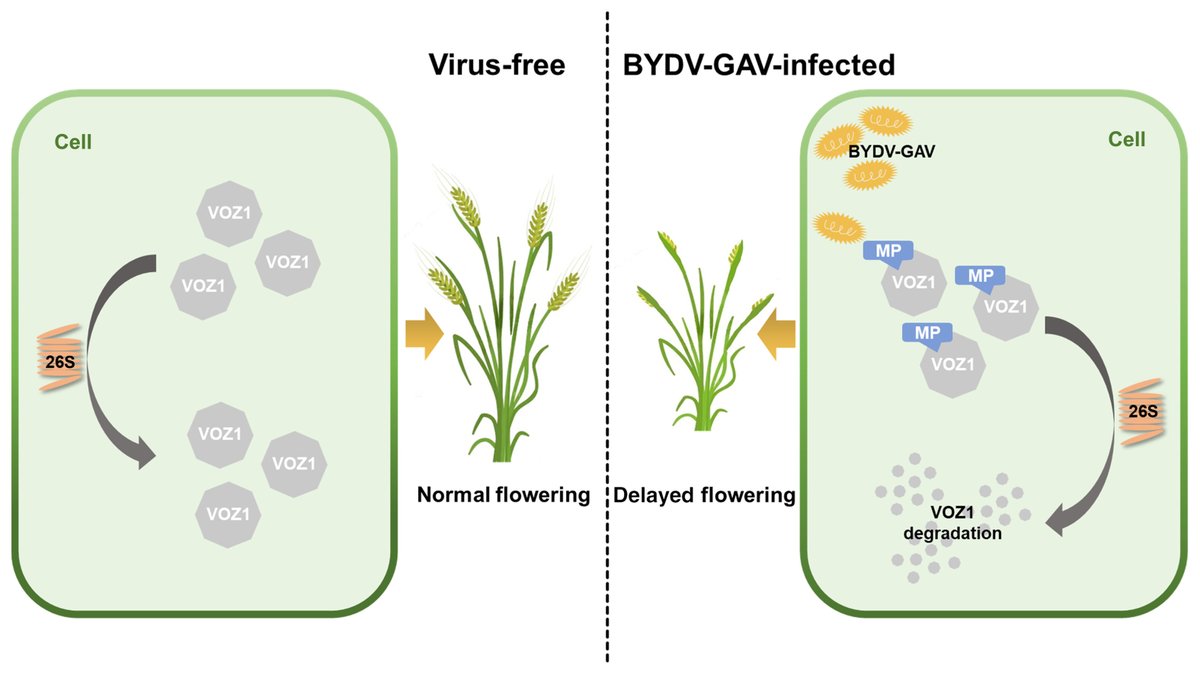
MPMI Journal
@MPMIjournal
IS-MPMI & APS: Open access journal on molecular biology & molecular genetics of pathological, symbiotic, & associative interactions of microbes with plants.
New call for papers alert 🚨🌱🦠 Submit to the "Symbiotic and Pathogenic Interactions in the Rhizosphere" focus issue by September 1, 2025! Focus Issue Guest Editors: Tarek Hewezi, Hari Krishnan, Kevin Garcia, and Mina Ohtsu Learn more: apsjournals.apsnet.org/mpmirhizosphere

Daniil M. Prigozhin et al. investigated the NLR complement of 26 nested association mapping founder lines of maize. To make this analysis accessible, researchers created NLRCladeFinder, a Google Colaboratory notebook, that accepts any newly identified NLR sequence, places it in…
Editor’s Pick! Pathogenic bacteria use Type 3 effectors to suppress host defenses. The cassava pathogen Xanthomonas phaseoli pv. manihotis (Xpm) causes severe disease, but its effector functions are not well understood. @dianagdlc et al. show that the Xpm effector XopAE…

A team of plant scientists has made a significant breakthrough in understanding how potato plants defend themselves against Spongospora subterranea f. sp. subterranea—the soilborne pathogen that causes powdery scab, an emerging and economically damaging disease affecting potato…

Editor’s Pick! Dwarfing and yellowing, common symptoms of viral infections, significantly reduce crop yields. Yilin Zhang et al. found that infection by barley yellow dwarf virus-GAV (BYDV-GAV) leads to a delay in the flowering process, potentially diminishing grain yield in…

Former students and colleagues of Dr. John McDowell published a @MPMIjournal article detailing John's amazing scientific achievements in the field of molecular plant-microbe interactions. John was a dedicated mentor, teacher, and friend to many within and beyond Virginia Tech.
Zymoseptoria tritici is a widespread wheat pathogen with high genetic variability from both sexual and asexual reproduction, complicating control efforts. Using whole-genome sequencing, @andreatobherre1 et al. found unexpectedly high within-field diversity, including multiple…

Want to find out more about publishing your work in @MPMIjournal? Please visit us at our @ISMPMI stand at #2025ISMPMI
Our commentary on how a virus infection delays flowering, published in MPMI titled "A Viral Brake on Bloom: BYDV-GAV Delays Flowering via VOZ Degradation" | Molecular Plant-Microbe Interactions® apsjournals.apsnet.org/doi/10.1094/MP… @MPMIjournal #virusinfection #BYDV @IamJawaharSingh
Diverse plant species detect bacterial flagellin using leucine-rich repeat receptor-like kinases to activate defense responses and promote resistance against bacterial invasion. Elizabeth K. Brauer et al. report that the flagellin-derived flg22 peptide induces callose, reactive…
Wheat co-infection with wheat curl mite–transmitted wheat streak mosaic virus (WSMV) and Triticum mosaic virus (TriMV) results in disease synergism with a drastically increased symptom phenotype of stunted growth, leaf bleaching, and enhanced titers of both viruses compared with…

Zengcui Zhang et al. investigated the wheat–Parastagonospora nodorum pathosystem, a model for necrotrophic fungal interactions where SnTox3 induces disease via an inverse gene-for-gene mechanism. @FarisGenLab Learn more: doi.org/10.1094/MPMI-1…

Transcriptomic analyses revealed that Fusarium graminearum expresses many candidate effector proteins during early phases of the infection process, some of which are annotated as proteases. @DarinoMartin et al. characterize an F. graminearum endopeptidase, FgTPP1 (FGSG_11164),…

In the Striga hermonthica–rice pathosystem, cell wall dynamics play a key role in determining resistance or susceptibility. Using simultaneous RNA-seq and weighted gene co-expression network analysis, Damaris Barminga et al. compared interactions between Striga and resistant…

Alexey Mikaberidze, Bruce A. McDonald, and Lukas Kronenberg reveal the genetic basis of leaf tolerance to the fungal pathogen Zymoseptoria tritici, which causes the globally important disease Septoria tritici blotch on wheat. doi.org/10.1094/MPMI-0…

Read the full paper 👇 apsjournals.apsnet.org/doi/10.1094/MP…
📢New paper! The fungal pathogen Fusarium uses a specialized protein to weaken plant immune defences & cause head blight - discovery could lead to bio-engineered disease-resistant grains. @USDA_ARS @IUBiology @plantdisease @ISMPMI Read the full story 👇 rothamsted.ac.uk/news/fungal-pr…
Adaptation to new climates poses a significant challenge for plant pathogens during range expansion, highlighting the importance of understanding their response to climate to accurately forecast disease outbreaks. Silvia Miñana-Posada and others explored the genetic architecture…
Janine Haueisen et al. investigated host specificity in Zymoseptoria tritici and two related species that form compatible and incompatible interactions with wheat. Through comparative microscopy, transcriptomics, and functional analyses, the researchers found a largely conserved…

Haider Ali, @McdonaldMeganc, and @GraemeKettles developed a rapid forward genetics methodology to identify genes that enable Zymoseptoria tritici to gain virulence on previously resistant wheat varieties. Learn more: doi.org/10.1094/MPMI-0…

Powdery mildews, particularly those infecting barley and wheat, serve as valuable models for studying obligate biotroph effector biology. Merle Bilstein-Schloemer, @MarionCMuller, and Isabel M. L. Saur summarize current insights into their effectoromes, highlight available omics…
